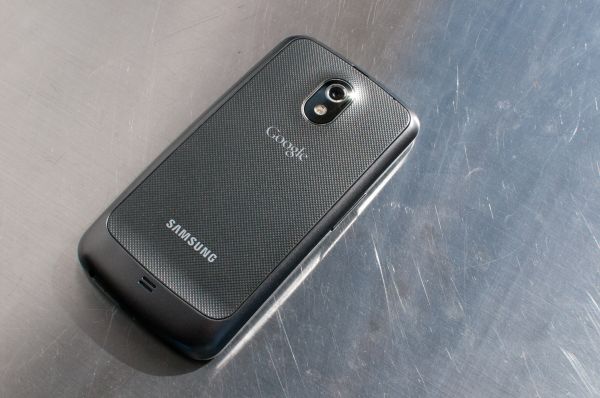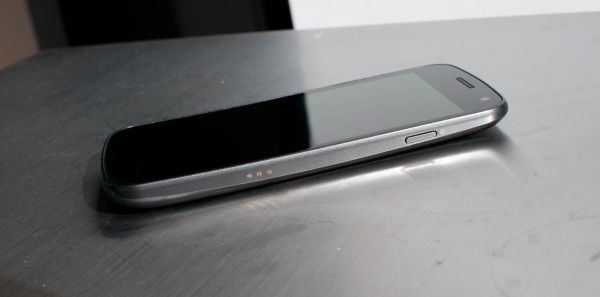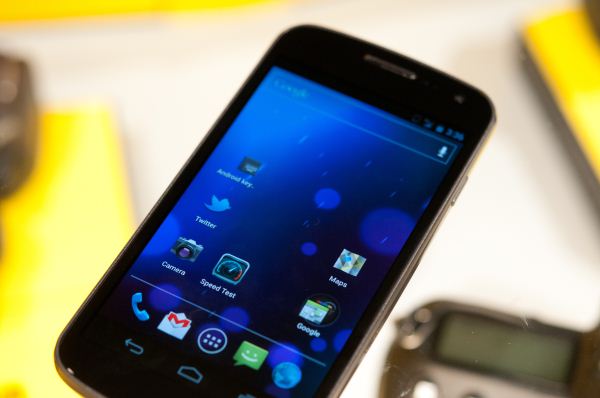Samsung Galaxy Nexus & Ice Cream Sandwich Review
by Brian Klug & Anand Lal Shimpi on January 18, 2012 1:34 PM ESTFor Google, one of the major points of Nexus has always been to provide a stable piece of reference hardware for it to cater a major OS release to. Each device has married a major revision of the Android platform to the latest stable hardware. That isn't to say that the hardware choices are always bleeding edge, but rather modern and logical next steps for the platform. I often read that Android as a platform is plagued by rapid hardware releases and product cycles that leave endless variants of the same hardware for each carrier, and that preloads and skins fragment the experience. While there's some truth to this, it isn't necessarily Google's fault - the software is open source after all. In the case of Android 4.0, this release is about consolidating the tablet and smartphone form factors under one version of Android and negating some talk of the platform's fragmentation.
For Google, each Nexus launch is analogous to Apple's iPhone launch - it's the one time that Google gets to dictate exactly what hardware is coming out, and exactly what software makes it onto that hardware. It is no less significant for Google's platform, either. Thus far there's been one Nexus device released per year, and that hardware gets updates from Google directly - at least until the hardware precludes support.
While the Verizon CDMA/LTE Galaxy Nexus is a bit unique, there's no indication thus far about how long carrier approval will take. The Galaxy Nexus line itself is very interesting - on one side, we have the GSM/UMTS device with pentaband WCDMA support that finally fully detaches the hardware from needing carrier specific versions for each region or carrier on GSM/UMTS networks. This is a dramatic step toward reducing carrier power, turning the networks into dumb pipes, and changing the way US customers shop for devices - exactly what the point was when Google launched the Nexus One. On the other, we have the Verizon CDMA/LTE version which thus far marks the furthest carrier incursion into otherwise untouched Nexus-land.
At this point, the Galaxy Nexus is awesome because of its marriage of Android 4.0 and a number of unique hardware features. I'd go so far to say that the Galaxy Nexus is without question the current best Android device, and with the improvements made in Android 4.0, first party applications and browser are now nearly as smooth as their counterparts in iOS. If OS smoothness was the thing holding you back from Android, 4.0 does a lot to change that. The Galaxy Nexus display is excellent, pentaband WCDMA on the GSM/UMTS model is exclusive only to that device, battery life isn't half bad, instant capture works well, and it has Samsung's newest LTE modem. The downsides are pretty much obvious - the camera is far from awesome, the GSM/UMTS variant has a quiet speakerphone, Samsung is using OMAP4460 at 80% of its maximum clocks, and some Galaxy Nexus displays have more more inhomogeneities than others. There's also the matter of newer 32 and 28nm SoCs that are just over the horizon.
The Galaxy Nexus is so important again because it's the only time Google gets to dictate everything - the hardware, the software, and update timing. There's also the element of freedom, with unlockable hardware out of the box. I find myself wishing that Google had begun its adventure sticking it to the carriers with pentaband WCDMA support like this phone finally has, as that would've been much more successful than the practice of releasing a few different Nexus variants with different bands.
As far as Ice Cream Sandwich is concerned, it really is Android perfected. Everything is smoother, faster and nearly all of our issues with the OS have been addressed. ICS brings Android into 2012 and gives Google a great platform to begin to introduce new features going forward. Android is now very close to UI performance parity with iOS, which eliminates a major tradeoff you had to make in the past. If you were hoping for ICS to be iOS with a Google logo on it, you'll be sorely disappointed. However if you're a fan of Android and just wished it were smoother and more polished, Ice Cream Sandwich is what you've been waiting for.













185 Comments
View All Comments
sjankis630 - Wednesday, January 25, 2012 - link
I can comment that my Galaxy Nexus' black is as black as midnight to a blind man.The only time I see some grey type tones is when the website is colored that way.
walkman - Sunday, January 22, 2012 - link
That was a shocking detailed and informative review -- It's the sort of article that makes Anandtech my first choice for tech reviews.- The article mentioned new processors just around the corner. Was this referring to any processors other than Krait? I haven't heard any news about Krait since November PR -- Are we looking at April or June? And do we think anyone besides HTC will use Krait?
Omid.M - Sunday, January 22, 2012 - link
Processors around the corner:Krait
Tegra3
OMAP5
Exynos 5250
It's going to be a bloodbath for the next 12-18 months.
If iPhone 5 uses the MDM9160 (?) modem with LTE, I'm jumping on that. Tired of tweaking battery life on my Thunderbolt. Not sure I want to do the same with a Galaxy Nexus LTE.
And what's this I'm reading about connection issues / dropped calls on the VZW Nexus? Ridiculous.
Rictorhell - Monday, January 23, 2012 - link
I am a big fan of this site and I read the reviews and articles all of the time and I find them very informative and useful, but, I have a request.When a review is written, particularly about a certain smartphone or tablet, it is mentioned whether the device has an SD card slot and you always tend to differentiate between whether it is a “full-sized” SD slot or a “micro”SD slot. That is useful to know, but there are several actual types of SD cards available, each with a different maximum storage capacity, and you don't specify in your reviews which types of SD cards are actually supported by the device being reviewed and I think that is a bit of an oversight.
To the best of my knowledge, standard SD cards only have a maximum capacity of up to 2gb, while SDHC cards can go up to as high as 32gb, and SDXC cards, while only available right now in sizes up to 128gb, are supposed to theoretically be able to be manufactured in sizes up to 2tb.
There is a huge difference in size between 2gb, 32gb, and 128gb. Given that smartphones and tablets have substantial built in limits as far as storage capacity, I think it would be very helpful to know which type of SD card is supported by which device, if that is possible.
If I read two reviews about two different Android tablets and both reviews mention that both cards have a full-size SD card slot, as a user with a lot of media files, I'm going to be interested to know if one of those tablets can support SDXC cards while the other one cannot.
I consider that to be a major feature, to me, just as important as battery life. If you do reviews of tablets and smartphones, or even ultrabooks, and neglect to specify how much storage potential these devices have or do not have, you are making it very easy for the hardware manufacturers to simply put in second rate storage and format support, knowing that it will not be covered in reviews by sites like Anandech. Not only is this going to stunt the evolution of these devices but it's also going to mean less options for consumers.
Anyway, thank you for your time.
peevee - Tuesday, January 24, 2012 - link
Anand, please include OS version number (and carrier when applies) in the charts for performance and battery life tests. They make huge difference, as browser speeds improve, they consume less CPU time and less energy when browsing.For example, the discrepancy between iPhone 4 and iPhone 4S looks outsized and probably is the result of testing iPhone 4 with iOS much older than the current version, probably not even 4.3, and 4S with iOS 5.
skinien - Tuesday, January 24, 2012 - link
What a review!!! I'm not in the market for a new hone right now, but when the time comes, I'll be looking here for a review on prospective phones. GREAT WRITE UP!sonicmerlin - Thursday, January 26, 2012 - link
I'm sorry, but you're ignoring the fact that ICS STILL lags. If you load up a heavy site like theverge, try scrolling around while the site is loading. Your entire page stutters and freezes until everything is done loading. ICS also lags more as you load more apps onto your phone, just like all previous versions of Android. Also notice how all UI elements are flattened when pages are rendered. Try zooming in or out. The new page info appears all at once, rather than pop up individually as in iOS and WP7. This can result in lag on heavy sites.For whatever reason tech "nerds" don't seem to notice the very obvious fluidity issues. Yes once you've loaded up a site it's easy to pan around, but people don't sit there patiently waiting for websites to load. Nor do they appreciate the frequent microstutters due to garbage collection issues, or the massive standby battery drain issues that tons of Android phones experience. And even the basic phone UI itself still lags behind your finger, demonstrating an irritating rubberband affect.
It's stupid. Android will never stop lagging until Google rewrites the OS to give the UI thread priority, instead of putting it at the same level as app priority.
rupert3k - Friday, January 27, 2012 - link
Learned loads from reading this, really impressed with how far Android has come.The stuttering when scrolling, zooming or browsing always annoyed me, stoked to learn ICS is fully accelerated.
One wonders if we'll see any Motorola Nexus style devices once Google settles into their new ownership. Be nice to see a Motorola this nice!
Hope we see high dot pitch Android devices to combat Retina, not happy with AMOLED at present it seems a bit yellowy & over saturated to me, surely LG or Samsung can also spec Retina style IPS or at least offer the choice between AMOLED & IPS 330dpi.
Bring on the Quad high DPI Android & iOS tablets!!
bruce3777a - Sunday, January 29, 2012 - link
Hi,Please bear with me:)
If a phone was upgraded from Gingerbread to ICS and It appears to be able to still work with the apps from many banks
It seems like these apps were not compatable with tablets running honeycomb so it was necessary to just use the browser.
If a tablet is upgraded from Honeycomb to ICS, or if a new tablet is purchased that has ICS would/should that automatically make it compatable, or is there still something that the banks would need to do to make it universal to both phones and tablets that use ICS. Thanks in advance for any insight.
Lucian Armasu - Monday, January 30, 2012 - link
I think I figured it out. I just saw this:http://score.nena.se/nenamark/view?version=2&d...
And I remembered it's not the only time I see 1196x720 pixels being rendered in a benchmark. Anand, if you're reading this, could it be because the buttons are NOT rendered by the GPU, and instead are rendered by those Cortex-M3 2D cores? They would have to render much fewer pixels, but they are also much slower than the GPU, and also pretty old tech I think.